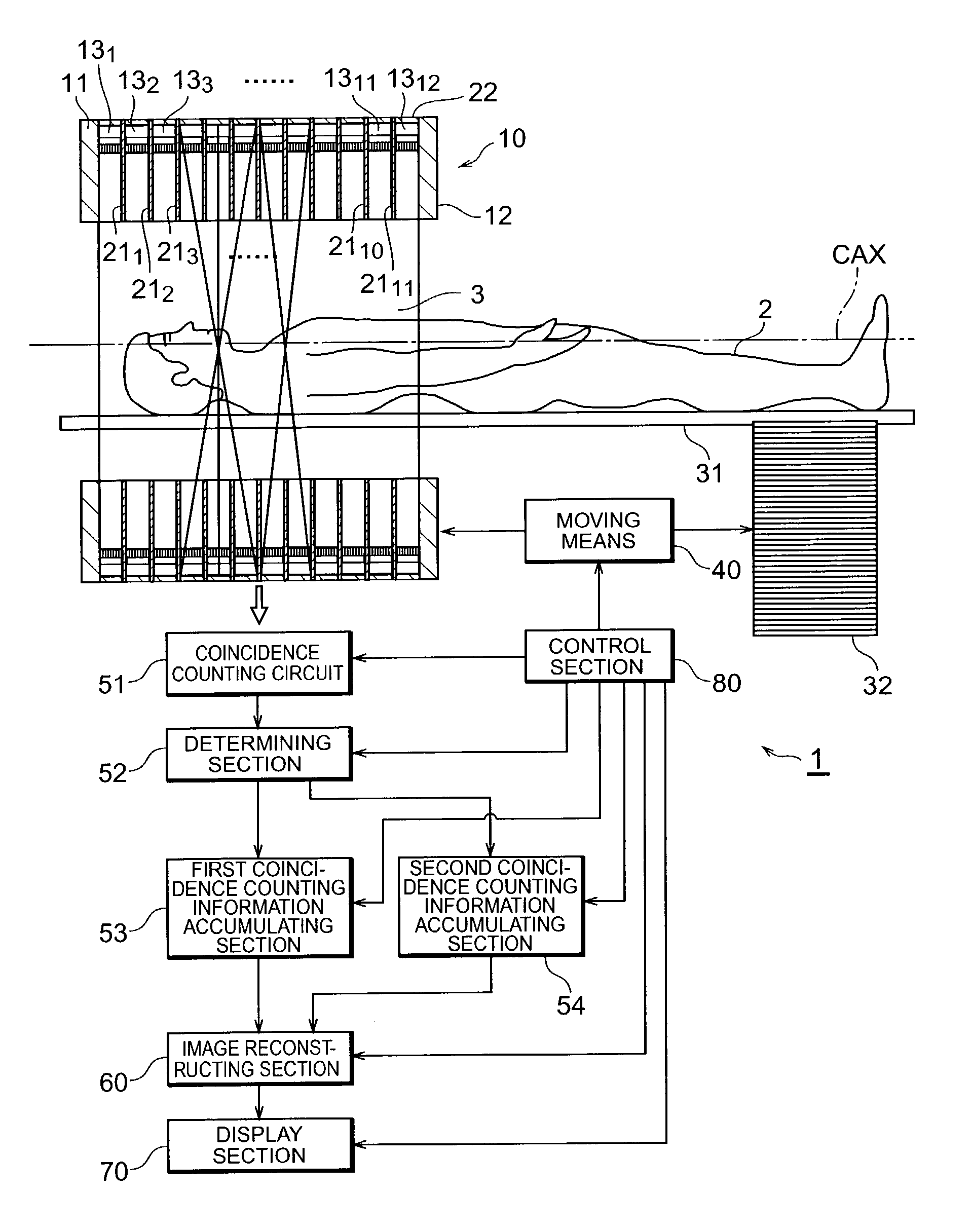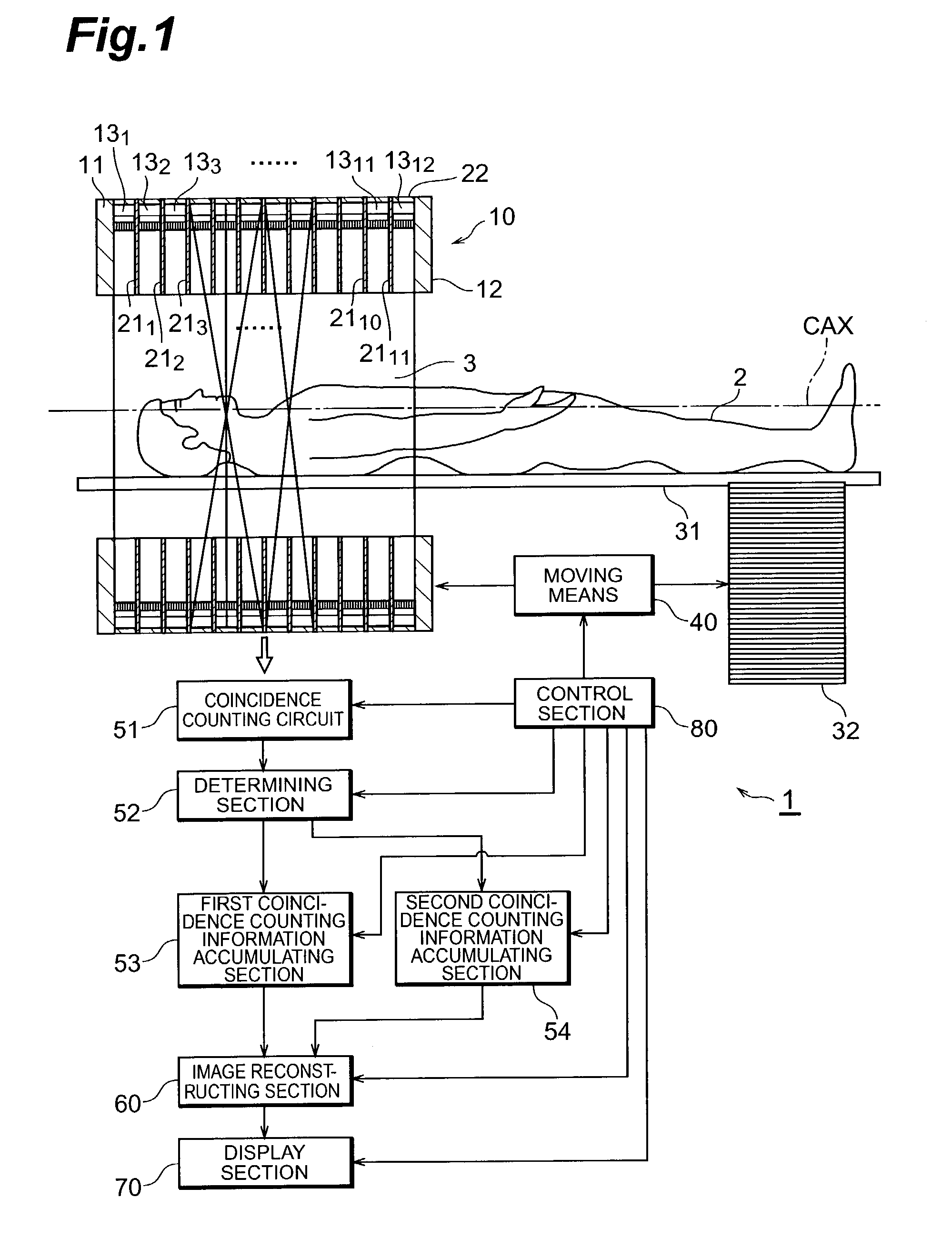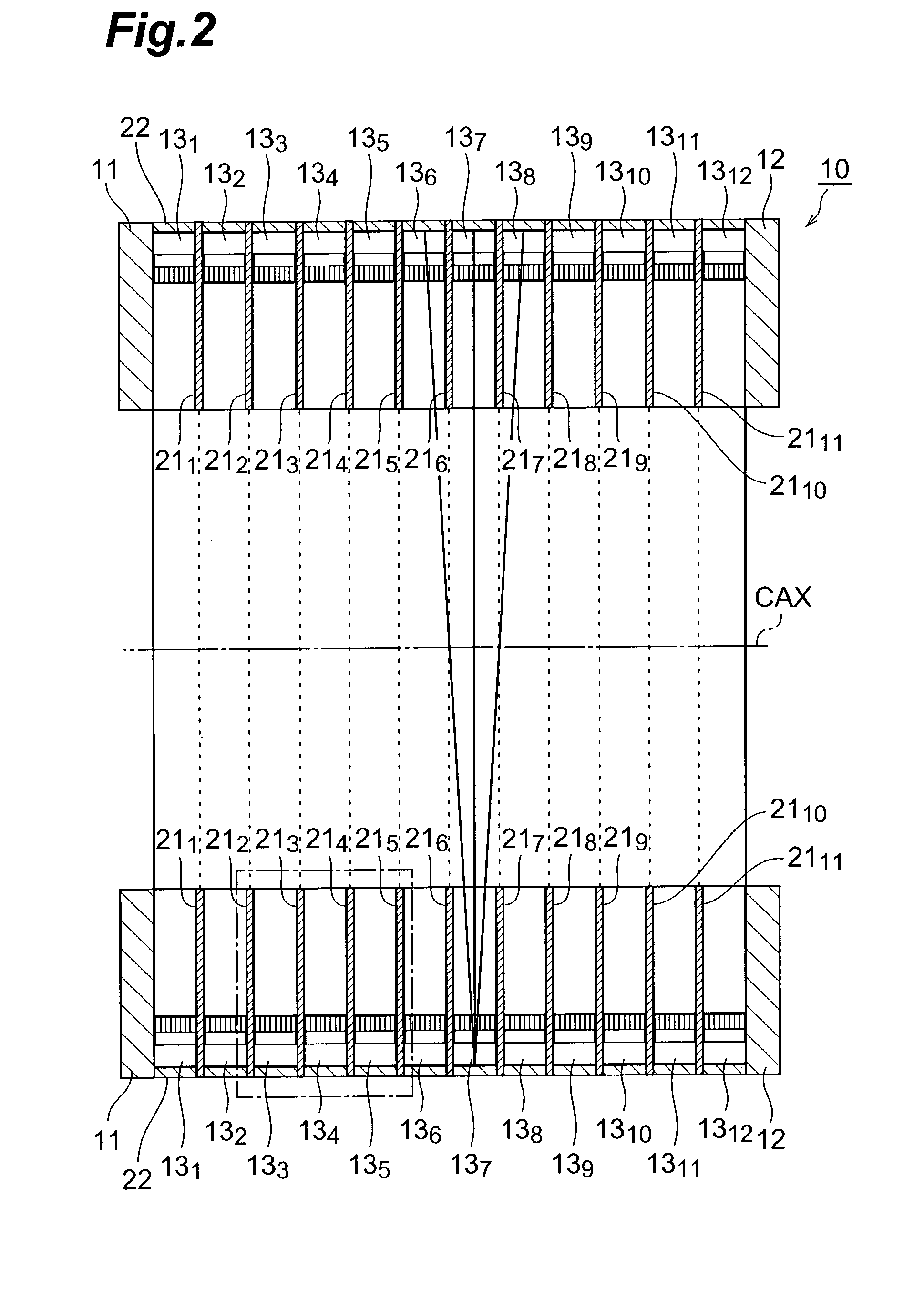PET device and image generating method for pet device
a technology of image generating method and pet device, which is applied in the field of pet apparatus and image generating method for pet apparatus, can solve the problems of deterioration of poor quantitativeness of reconstructed image, etc., and achieve excellent quantitativeness, good photon pair detection sensitivity and quantitativeness, and improve the resolution of reconstructed image.
- Summary
- Abstract
- Description
- Claims
- Application Information
AI Technical Summary
Benefits of technology
Problems solved by technology
Method used
Image
Examples
Embodiment Construction
[0033]An embodiment of the present invention will be described in detail below with reference to the accompanying drawings. Note that the same reference numerals denote the same elements throughout the drawings, and a repetitive description will be avoided. Note that a PET apparatus 1 according to this embodiment to be described below incorporates all the elements and steps defined in the appended claims.
[0034]The arrangement of the PET apparatus 1 according to this embodiment will be described first with reference to FIGS. 1 to 5. FIG. 1 is a view showing the schematic arrangement of the PET apparatus 1 according to this embodiment. FIG. 1 shows cross-sections of a detecting section 10 and slice collimators 21 taken along a plane including a central axis CAX. The PET apparatus 1 according to the embodiment includes the detecting section 10, slice collimators 211 to 2111, a bed 31, a support base 32, a moving means 40, a coincidence counting circuit 51, a determining section 52, a f...
PUM
 Login to View More
Login to View More Abstract
Description
Claims
Application Information
 Login to View More
Login to View More - R&D
- Intellectual Property
- Life Sciences
- Materials
- Tech Scout
- Unparalleled Data Quality
- Higher Quality Content
- 60% Fewer Hallucinations
Browse by: Latest US Patents, China's latest patents, Technical Efficacy Thesaurus, Application Domain, Technology Topic, Popular Technical Reports.
© 2025 PatSnap. All rights reserved.Legal|Privacy policy|Modern Slavery Act Transparency Statement|Sitemap|About US| Contact US: help@patsnap.com



